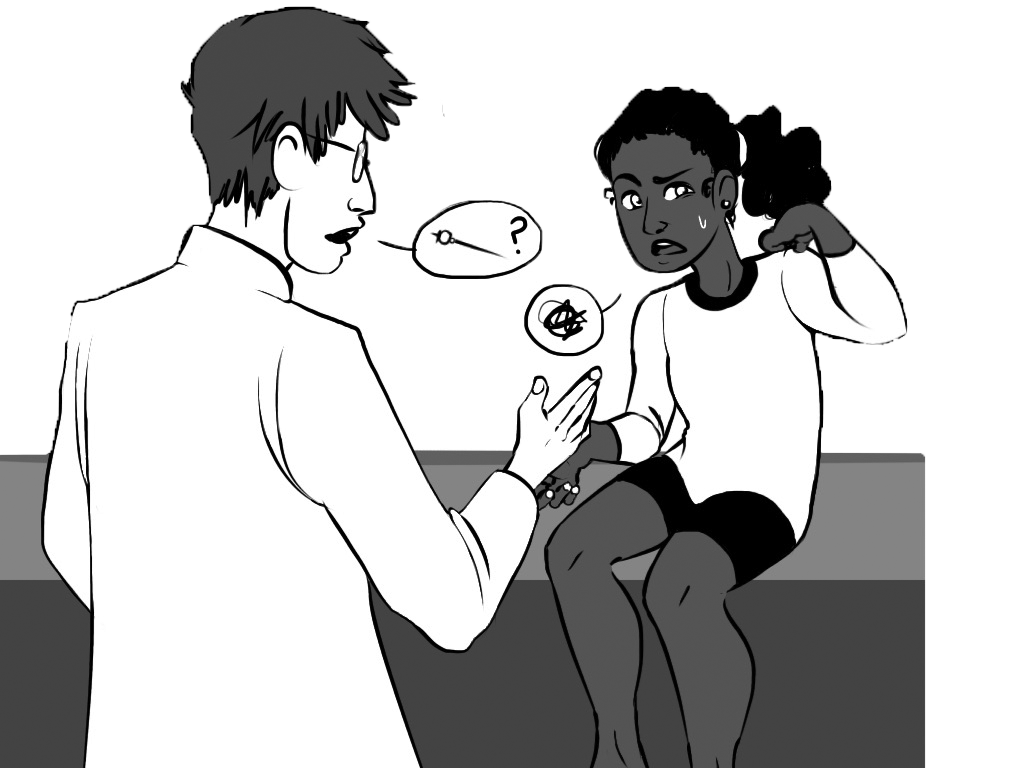
Two-time Pulitzer Prize-winning journalist James Reston underwent an emergency appendectomy while traveling in China in 1971, where medical personnel treated his ailment with acupuncture. When he returned to the New York Times, his article brought along much attention and criticism alike towards alternative medicines in general.
According to EverydayHealth, alternative medicine is “a category of medicine that includes a variety of treatment approaches that fall outside the realm of conventional medicine.” Alternative medicine is assumed to have healing effects, but has not been backed by scientific evidence.
Dr. Venkateshwar Kapur, the sports doctor at South San Francisco Kaiser Permanente Medical Center, says, “There are countless alternative remedies that provide patients with options outside the realm of standard medical treatment, ranging from plant supplements to diet modifications to [other] treatments,” says Kapur. “Overall, some alternative therapies may be helpful, while others may have no scientific basis and/or could be harmful.”
In general, complementary medicine falls under five major categories: mind-body medicine, whole medical systems, manipulative and body-based practices, energy medicine, and biologically based practices.
According to the Center for Mind Body Medicine, the mind-body medicine manipulates a patient’s thoughts and emotions to encourage relaxation, improve coping skills, or reduce tension and pain. Examples include meditation and various music and art therapies.
Whole medical systems are theory practices that have evolved over time from conventional medicine. An example includes traditional Chinese medicine.
Manipulative and body-based practices encompass, according to Raby Institute, “a system of therapies that use either manual manipulation or movement of one or more parts of the body to address structural imbalances of the bones and joints, the soft tissues, and the circulatory and lymphatic systems.” Practices include chiropractic and osteopathic manipulation.

Energy medicine promotes healing by applying energy fields that are said to encircle the human body. Forms include therapeutic touch, yoga, Reiki, and qigong.
Meanwhile, biologically based practices consist primarily of herbalism, diet therapies, natural substances, and orthomolecular medicine to treat disease. For instance, herbal medicine uses plants and plant extracts to promote wellness.
Altogether, there is a growing number of athletes who are turning to alternative methods in place of more common practices. A survey conducted by the National Center for Complementary and Alternative Medicine (NCCAM) found that of the 20,000 adults and 10,000 children surveyed, about 40 percent of adults and 12 percent of children have used some form of alternative medicine.
Senior track and field runner Michelle Chow and junior cross country runner Margot Bellon discuss how deep tissue massage has helped them through their road to recovery.
“I’ve pulled and tore a lot of muscles and broken and dislocated a lot of ligaments,” says Chow. “During massages, I would be put in a lot of pain in the scar tissues in my hamstrings, but a day or two later, I could stretch that hamstring a hundred and fifty percent farther.”
For Bellon, who has faced problems with her hip-flexor and stiffness in her IT bands, the deep tissue massage has definitely helped her relieve the strain. “It helped relieve a lot of strain in my legs and helped me get over my injury.” Nonetheless, Bellon cites cost as a drawback, saying, “My deep tissue massage was seventy dollars. It’s not something you could do whenever you would like.”
In addition to the deep tissue massage, Chow has also tried acupuncture. “Acupuncture has been instrumental in allowing me to continue taekwondo, because, and without acupuncture to realign my muscles and put the pieces back together, I wouldn’t be walking right today.”
Meanwhile, junior basketball player Mark Rivera used cupping therapy to relieve his back pain. “I had a lot of back pain and was taking Advil at the time, which didn’t work. After I did the suction cup therapy in the Philippines, it loosened up the muscles in my back and relieved my back pains.”
San Mateo student-athlete Brandon Huey decided to use acupuncture over common medicinal treatments because family friends had told him about the positive effects of Chinese medicine. For him, acupuncture was chosen for its efficiency in improving the muscle strength in his legs.
Similar to Chow, he was skeptical about the treatment at first, but later discovered its satisfying results. “Once a week, I have an acupuncture treatment that lasts for about two hours. I noticed that my leg muscles were not getting as sore as before. In addition, my leg muscles would not feel like jello after a training session: they felt strong and not as sore.” In reflection, with alternative medicine, Huey stresses patience, saying, “It is not immediate like western medicine.”
“[Generally,] athletes seek alternative [as a] ‘second chance’ when conventional medicine fails,” said Kapur.
All in all, alternative medicine has seemed to work for a handful of the Aragon community, although many are skeptical about its use and effects. One may never know the facts of the case, for it has not been proven scientifically; it is solely up to the individual to figure out which works best.



